Text

— April 19, 1916 / Franz Kafka diaries
#poor little meow meow#April 19#april#1916#franz kafka#daily kafka#franz kafka diaries#quotes#alt text
433 notes
·
View notes
Text

Dates Due 1916-1930. Beginning right. 1916.
Internet Archive
502 notes
·
View notes
Text
#OTD in Irish History | 22 April:
1365 – Lionel returns to England, leaving Ormond as his deputy. 1671 – An English Navigation Act prohibits direct importation of sugar, tobacco and other produce from the colonies to Ireland; act expires in 1681 but is renewed in 1685 and extended in 1696. 1717 – John Marshall, a successful attorney and father of Robert Marshall, a future MP for Clonmel and an executor of Hester Vanhomrigh…
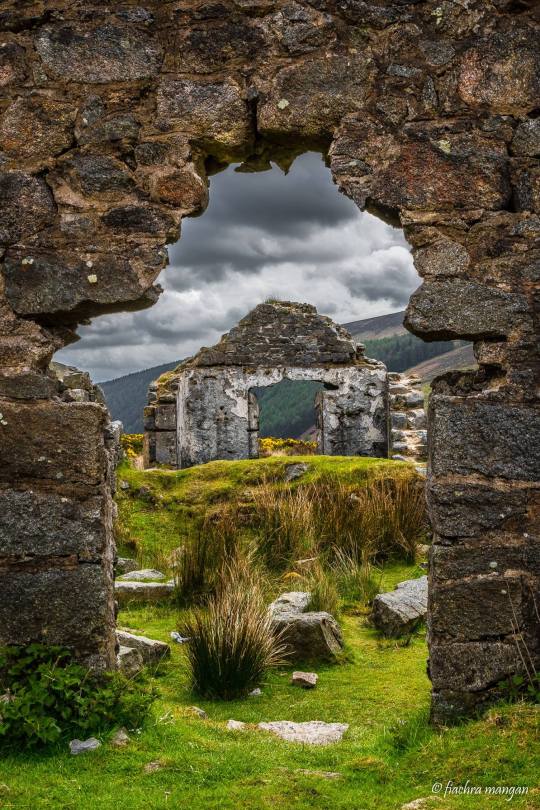
View On WordPress
#irelandinspires#irishhistory#OTD#1916 Easter Rising#22 April#Co. Tyrone#Daniel O&039;Connell#Dungannon#Hill of the O&039;Neill#History#History of Ireland#Ireland#Irish Civil War#Irish History#Sinéad O&039;Connor#Today in Irish History
12 notes
·
View notes
Text

An Anzac Day tribute to the fallen soldiers of Australia & New Zealand
#ANZAC Day#Australia#New Zealand#WWI#1916#Gallipoli#armed forces#Commonwealth#British Empire#25 April 2023
116 notes
·
View notes
Text
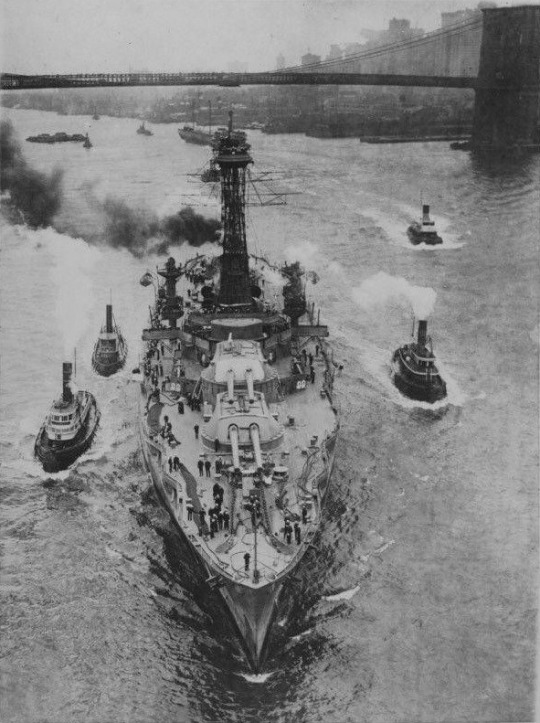
USS TEXAS (BB-35) passing under the Manhattan Bridge on her way to the New York Navy Yard. Her crew had spent 90 days at sea for fleet maneuvers.
Photographed on April 18, 1916.
source, source
#USS Texas (BB-35)#USS Texas#New York Class#dreadnought#battleship#Battleship Texas#Warship#ship#New York City#New York#April#1916#united states navy#us navy#navy#usn#u.s. navy#my post
76 notes
·
View notes
Text
[I]n the period of eerie suspension before the explosion [...], those who registered the [...] uncanny [...] experience[d] a condition that [...] would become familiar to everyone living in a targeted city during the Cold War: the sense that the present survival and flourishing of the city were simultaneously underwritten and radically threatened by its identity as a nuclear target. [...] [I]nhabitants of Cold War cities [...] became accustomed to a more overt and permanent variant of the uncanny frisson [...]. Lobbing incendiaries and explosives through the roofs and windows […], the British gunners gutted portions of the Dublin city center; during the week of the Rising, 500 people died […]. The more frequent and extreme outbreaks of traumatic violence in everyday urban life […], in the early-twentieth-century imaginary, the city had begun to host new forms of sudden mass death and severe physical destruction.
Cities had, of course, been sites of mass death before 1916.
But the Easter Rising differed from nineteenth-century urban barricade fighting in the use, principally by British soldiers, of more precise and destructive weapons; fired from the ground, from rooftops, and from gunships in the Liffey, the new cannons, incendiaries, and machine guns rapidly reduced whole blocks of the city center to ruins. These emerging military technologies and strategies link the Rising to the Great War then raging in England and on the Continent, whose fields and cities had become proving grounds for new weaponry and modes of warfare. In Ireland and the Great War, [...] “Like the Western Front [the Easter Rising] became a war of attrition, and the lessons of the Western Front were taught again in the streets of Dublin.” […]
---
Though the shelling of Dublin in 1916 reminded observers of Ypres, Louvain, and other European cities ruined in the Great War, it might as credibly have called to mind a different list: Canton, Kagoshima, and Alexandria. During the second half of the nineteenth century, British naval bombardments made rubble of these coastal cities […].
The naval bombardment of undefended cities and civilians, particularly those in colonial territories, paved the way for the first airplane bombardments, in which the imperial powers of Europe dropped bombs on nonwhite, non-European adversaries and anticolonial forces.
Italy pioneered airplane bombardment in 1911 by bombing Arab oases outside Tripoli; British planes bombed Pathans in India in 1915, Egyptian revolutionaries and the Sultan of Farfur in 1916, a Mashud uprising on the Indian-Afghanistan border in 1917, and Somaliland and the Afghan cities of Dacca, Jalalabad, and Kabul in 1919.
---
Several years before the inhabitants of European cities experienced it, aerial bombardment had been established as a uniquely colonial nightmare. [...] [T]he initial use of airplane bombs against colonies was foreseen and even fed by a racist fantasy pervading early-twentieth-century European science fiction, a fantasy of bombing subject races either into submission or out of existence. The willingness of several signatory nations to ignore Article 25 when bombing nonwhite soldiers and civilians made colonial towns and cities the first civilian spaces secured by the implied threat of bombardment from above.
In the world war […] the brief tenure of aerial bombardment as an exclusively colonial technique ended when imperial powers launched the first bombing campaigns against the cities of other imperial powers, initiating a change that would later find its apogee in the nuclear condition: the reconfiguration of the major metropolis as target.
---
All text above by: Paul K. Saint-Amour. “Bombing and the Symptom: Traumatic Earliness and the Nuclear Uncanny.” Diacritics Volume 30, Number 4, Winter 2000, pp. 59-82. [Bold emphasis and some paragraph breaks/contractions added by me. Presented here for commentary, teaching, criticism.]
#today 29 april is anniversary of surrender and end of the easter rising in 1916#tidalectics#ecologies#haunted#geographic imaginaries#archipelagic thinking
22 notes
·
View notes
Text
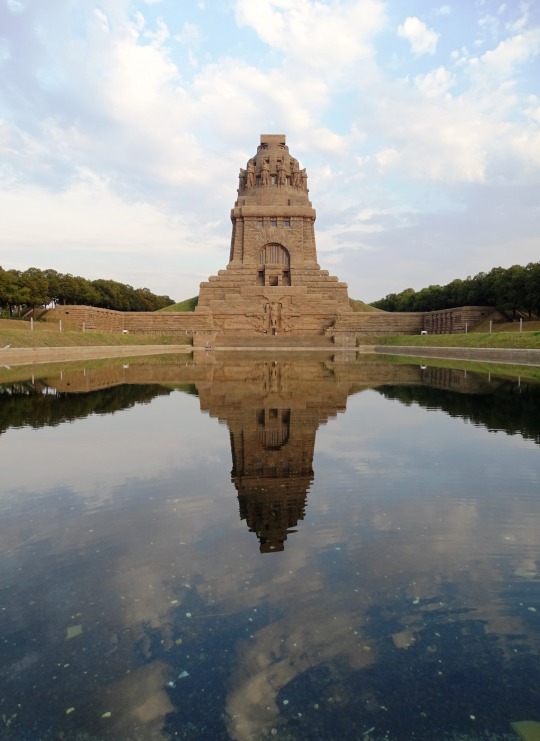
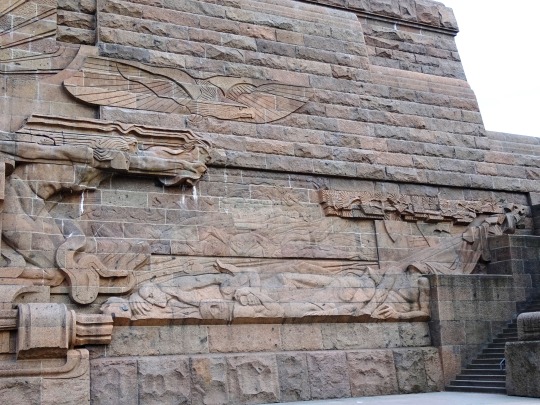

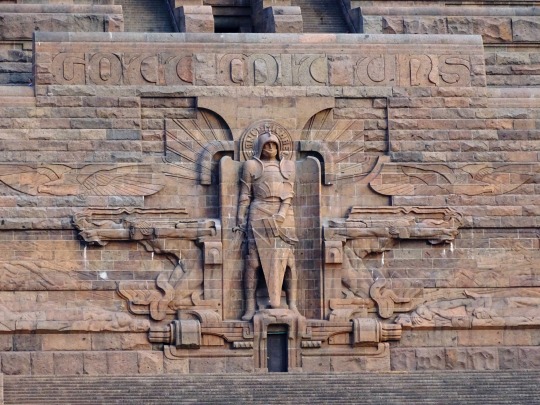

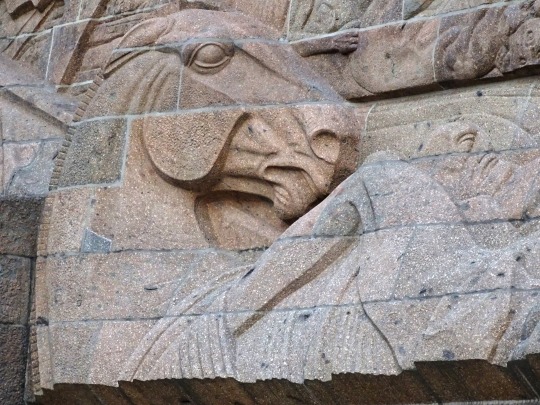
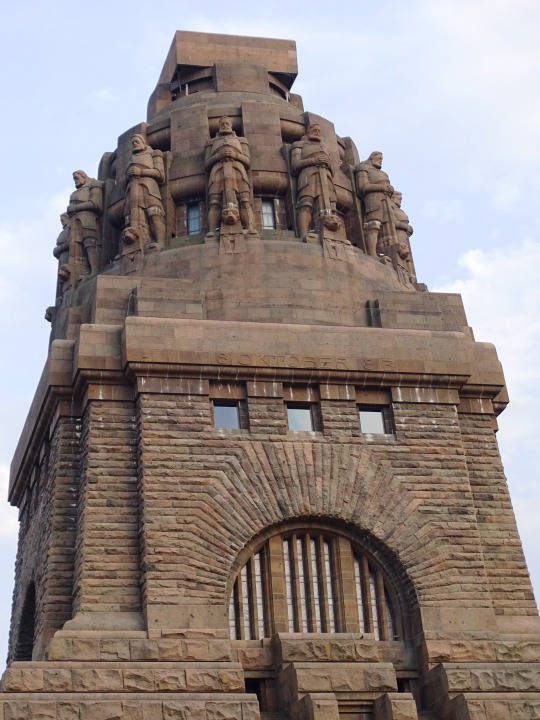
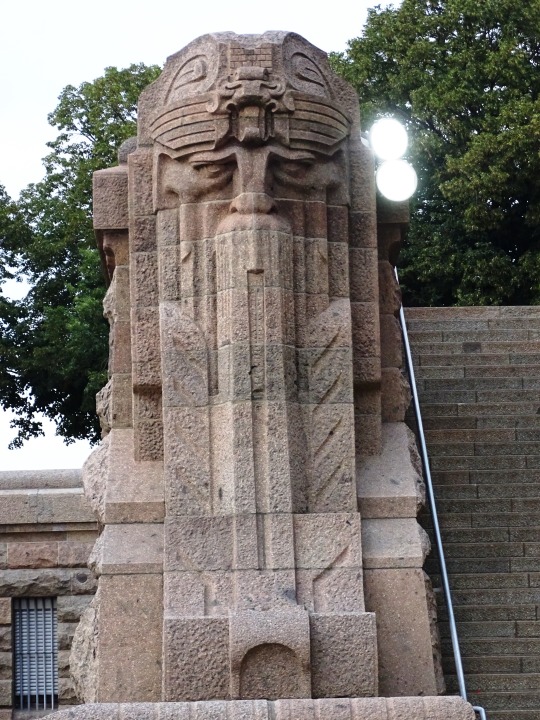
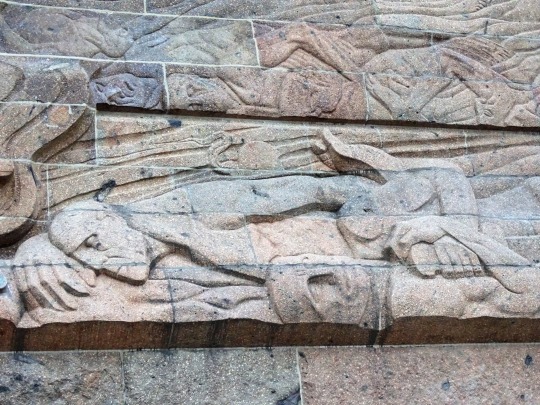
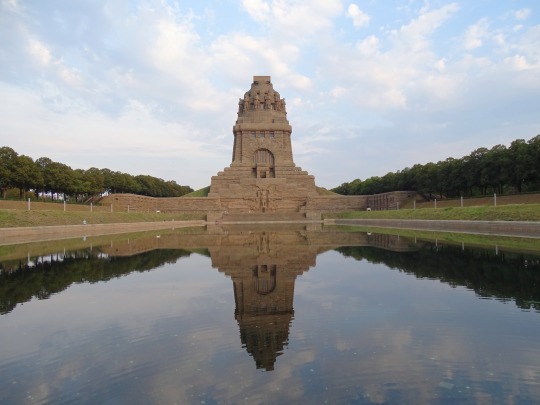

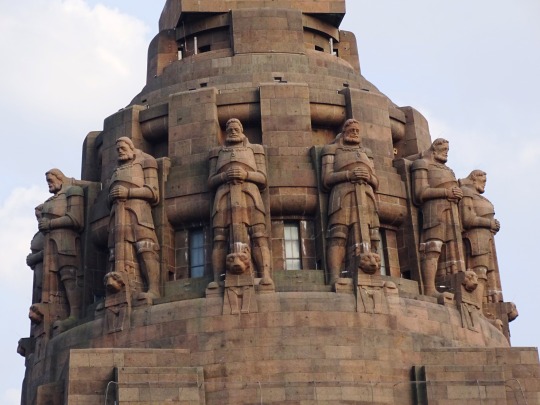

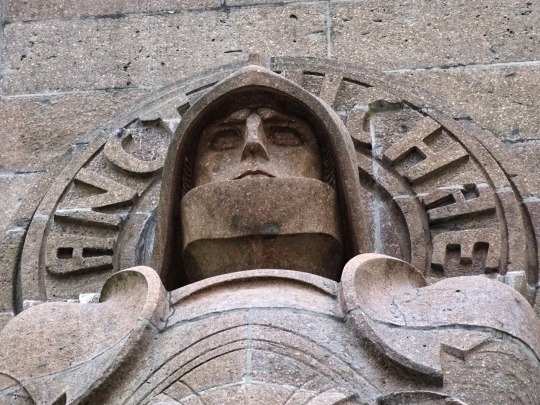


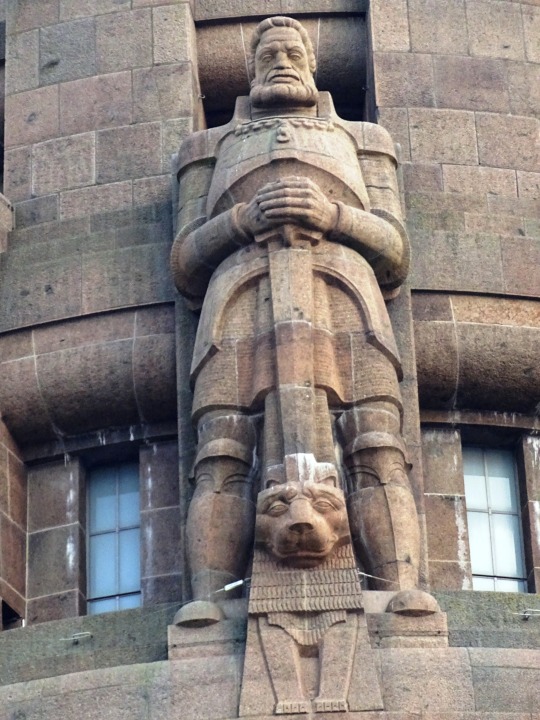
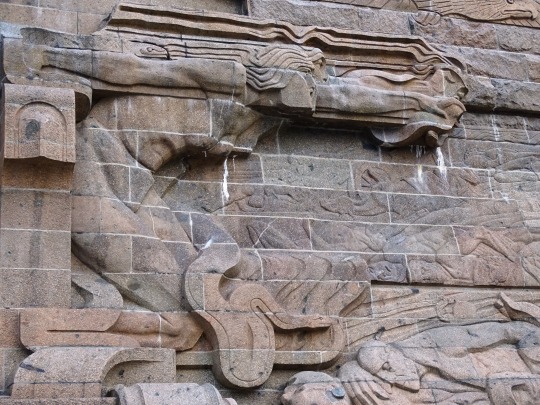

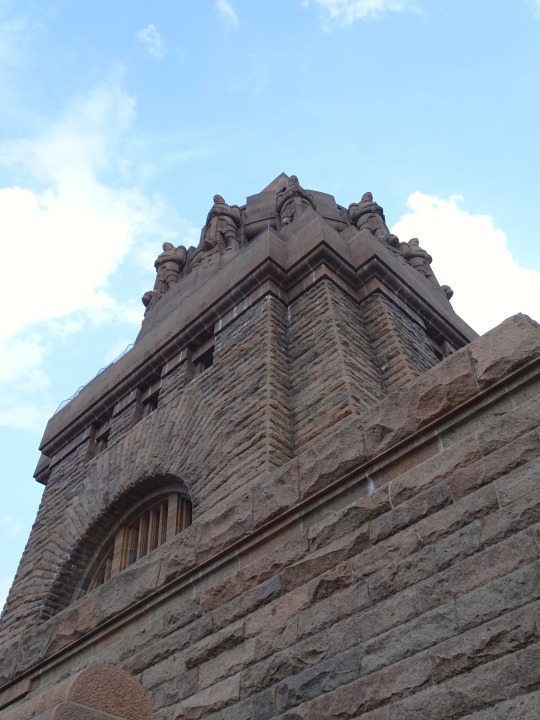
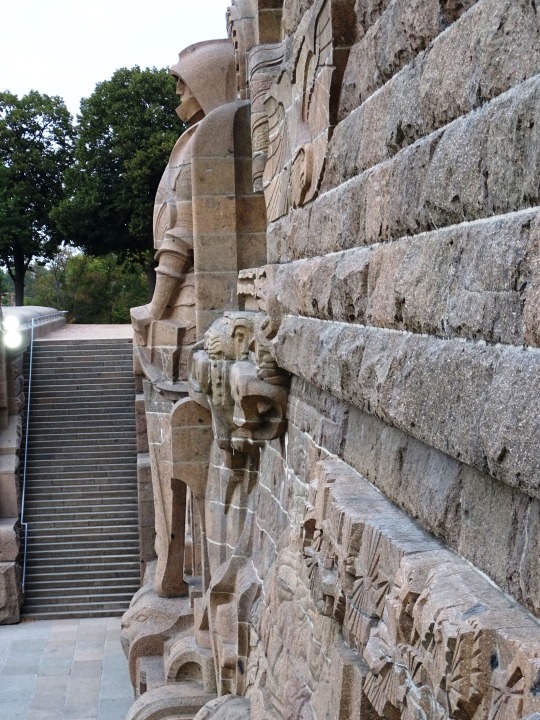

Bruno Schmitz died on April 27, 1916.
#Bruno Schmitz#Monument to the Battle of the Nations#died#death#Leipzig#Völkerschlachtdenkmal#summer 2020#Germany#Saxony#Sachsen#travel#architect#Archangel Michael#See der Tränen#Reflecting Pool#cityscape#architecture#tourist attraction#landmark#Deutschland#exterior#evening light#Christian Behrens#detail#public art#German history#anniversary#original photography#vacation#27 April 1916
3 notes
·
View notes
Text
Future Tense
What makes me nervous? Easy. Money. Why do you find money unsettling? Stability. I want stability. What does stability look like to you? A fully-funded future. What else? Being able to pay for everything I need. And? A comfortable place to live. And? Time to travel. Why are you nervous? Even the best-planned futures can fail.

View On WordPress
#anxiety#April#dailyprompt#dailyprompt-1916#finances#future#NaPoWriMo#National Poetry Month#nervous#poem#Poetry#Q & A#writing
2 notes
·
View notes
Text

Chicago Ledger, Illinois, April 22, 1916
2K notes
·
View notes
Text

(TW injury description)
I am SO glad you asked I lose my mind over this man. Sidney Beldam! He’s most known for his miraculous recovery from a major facial injury sustained while he served as a young sergeant in the First World War. If you’ve read the Facemaker by Lindsay Fitzharris you might recognise him! Sources differ slightly about his story, so I’ve pieced it together as best I could. The photos below were from about February 1919!
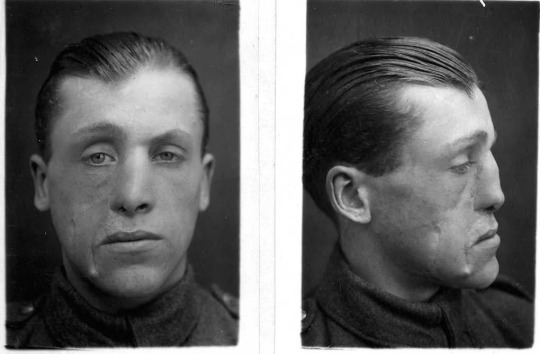
Born in 1897, Sidney was about 17 living with his mother in Cambridge, England when the Great War commenced. While he didn’t enlist initially, he was soon conscripted when it came about in 1916 though thankfully he was in a non-combatant role driving lorries transporting soldiers to boats headed for France. It’s where he learned he enjoyed driving! However in April 1917, Sidney was transferred to the Machine Gun Corps and eventually rose to the rank of sergeant where only 7 months later, his life would change forever.
During the battle of Passchendaele, one of the muddiest most gruelling segments of the war, Sidney was on the frontlines when a shell burst, sending a shrapnel fragment tearing diagonally through his nose and the right side of his face. The young soldier collapsed face first into the mud which ended up saving his life as falling backwards would have caused him to choke on his own blood. For three days Sidney laid in a mangled heap floating in and out of consciousness while vermin scurried about his body and the other dead and wounded around him. No one would ever know the details of those agonising three days, but the trauma he experienced there left him with a lifelong phobia of rats and cockroaches. After the initial wounded had been cleared out, a wandering band of stretcher bearers discovered Sidney alive after one man touched him with his boot fully expecting him to be dead. Miraculously, he was still clinging to life.
The 19 year old sergeant was rushed down the line and then transferred to two different military hospitals where his wounds were hastily stitched in an effort to save his life before infection could spread. Unfortunately, closing the gap where he was missing flesh in his cheek caused his upper lip to be pulled into a sneer and a sunken depression formed where most of his nose was missing around the bridge. Still, he was lucky to be alive, which he later used to remark. Well he was luckier still as he would be transferred to Sidcup military hospital in Kent where he would become a patient under Sir Harold Gillies, the man often considered the pioneer of modern plastic surgery. When he arrived at hospital in 1918, his wounds were healed but his face still bore the heavy trauma of his experience. If you want to see his photographs upon arrival, I won’t post them here but if you search his name, the photos are everywhere. IMO they’re not graphic but I know it can upset some people.
Gillies went to work trying to restore Sidney’s face. This required him to reopen the wound in his cheek where a skin flap was grafted to allow his upper lip to return to normal. He also folded down a skin flap from his forehead in order to create a new nose. Behind his facade, a series of tubes and canals had to be inserted for proper sinus drainage and other unnamed functions. While his initial handful of surgeries did most of the work to reconstruct his face, Sidney underwent over 40 surgeries between 1918 and the 1930s, some reconstructive and some to evacuate the tubes behind the flesh, meaning the common cold was a routinely painful affliction for him. Gillies understood operations were traumatic for the men at Sidcup, especially since most required more than one, and so made a point about creating a lighthearted ward environment, one Sidney says was quite jolly with the staff doing everything they could to make them feel comfortable and dignified as possible. And while I thought the topmost photos were the most updated case study photos for his recovery, I stumbled upon another set from 1920 in the Faces of War by Andrew Bamji I have not seen posted anywhere!
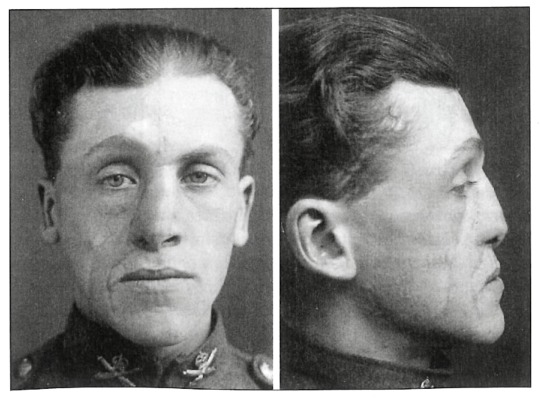
And lads listen. In such a sweet little twist, while Sidney was still recovering from the bulk of his major surgeries, a local pianist by the name of Winifred volunteered to play for the resting servicemen, all of whom had some form of disfigurment or amputation. Carrying in her sheet music, she and Sidney laid eyes on each other for the first time and she later remarked how his smile instantly lit up the whole room! For them, it was love at first sight. The two were soon married, and although it was in the 1920s, I don’t have an exact year for this. This most likely came after Sidney was finally discharged from service in 1921. There is a photo of their wedding and y’all look how SWEET!!
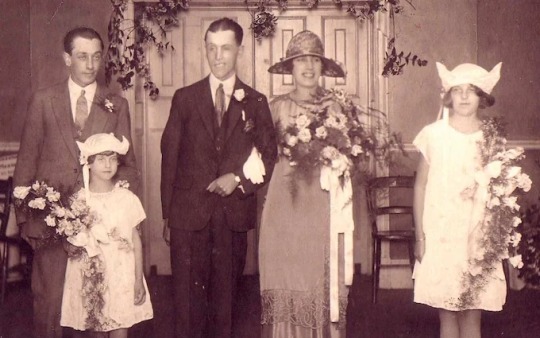
Between his initial surgeries and army discharge, Gillies asked if Sidney would be his personal chauffeur, an offer he took up quickly as he loved driving from his time with lorries during the war. One somewhat humorous account tells of Gillies—who was a bit scattered at times—asking Sidney to renew his driver’s license as the surgeon left it until the last day to take care of; Sidney in a rush waited in a long line at the county hall before jumping the queue and begging the administrator to expedite his employer’s license as it was needed to drive him to the hospital the next day. The man refused, even for a surgeon to get him to his patients. Sidney went to another staff member who was friends with Gillies and begged him the same. The man cheerily agreed but was still in need of a signature from the stubborn administrator who again refused... at least until he found out Harold Gillies nearly won a golfing championship, at which point he took Sidney to his personal office to expedite the license as he was happy to do business for a skilled golfer (apparently saving people’s lives doesn’t matter as much??). A no doubt perplexed Sidney was finally able to get back to the hospital on time!
After his army discharge and most likely about the time of his marriage, Sidney moved back to Cambridge where he worked for the council as a rent collector. He was so well liked, apparently even from the people he collected from, that he soon worked his way to Housing Manager for Cambridge. About this time, he had a daughter, Pam. Every account I read of him, people gush about how sweet he was. His wife recalls how Sidney was always adored by all his family and friends. His granddaughter Marilyn McInnes in an interview said, “He was the most warm and optimistic and loving man. I adored my grandfather, I was constantly on his lap as a small child. I never noticed anything funny about his face, I guess I thought all grandads looked like mine.”
Sadly, Sidney Beldam passed away from cancer at about 80 years old in 1978. But considering the man was given 6 months to live and ended up living for 60 years more surrounded by a large and loving family, I’d say he certainly had a full life. There is a picture of him and his wife in the 60s and they are absolutely charming!!

But anyway that’s me done rambling I’ve a massive crush on him. His story makes me genuinely happy to tell and I’m so glad you asked!
#I love love love this man sm he’s just described as this ray of sunshine!!#I want to put him in my pocket#And the story of him and his wife like actually kill me that is so cute#I’m so happy he was able to live a full life#Also yeah lads he is so fine ngl when I saw him in that book I was like WOW#he has such gorgeous eyes and I love his nose#and his smile#wwi#world war 1#sidney beldam#history#wwi medicine#injury tw#medical tw#long post
486 notes
·
View notes
Text














BOBSTROLOGY
A completely serious presentation by @pegasusdrawnchariots and oatflatwhite
written version under the cut!
♈️Patrick O’Keefe [April 3 1926] ♈️Robert Sink [April 3 1905] ♈️John Julian [5 April 1924] ♈️Renée Lemaire [10 April 1914] ♈️James Miller [11 April 1924] ♈️Walter “Smokey” Gordon [April 15 1920] ♉️~Ronald Speirs [April 20 1920] ♉️Alton More [April 22 1920] ♉️Henry Jones [27 April 1924] ♉️Edward “Babe” Heffron [May 16 1923] ♉️John Martin [May 12 1922] ♉️Joseph Liebgott [May 17 1915] ♉️Norman Dike [May 19 1918] ♉️William Guarnere [April 28 1923] ♊️David Webster [June 2 1922] ♊️George Luz [June 17 1921] ♊️Roy Cobb [June 18 1914] ♋️Frederick “Moose” Heyliger [June 23 1916] ♋️Albert Blithe [June 25 1923] ♋️Donald Hoobler [28 June 1922] ♋️Thomas Meehan [8 July 1921] ♋️John Janovec [9 July 1925] ♋️Robert “Popeye” Wynn [July 10 1921] ♋️James "Moe" Alley [July 20 1922] ♌️~Burton “Pat” Christenson [July 23 1922] ♌️Eugene Jackson [29 July 1922] ♌️Donald Malarkey [July 31 1921] ♌️Edward Tipper [3 August 1921] ♍️Floyd Talbert [August 26 1923] ♍️Alex Penkala [August 30 1922] ♍️William Dukeman [3 September 1921] ♎️Eugene Roe [October 17 1922] ♎️Harry Welsh [September 27 1918] ♎️Lewis Nixon [September 30 1918] ♎️Ralph Spina [October 5 1919] ♎️Thomas Peacock [October 9 1923] ♏️Denver “Bull” Randleman [November 20 1920] ♑️Lynn “Buck” Compton [December 31 1921] ♑️Antonio Garcia [January 17 1925] ♒️Richard "Dick" Winters [January 21 1918] ♒️Herbert Sobel [January 26 1912] ♒️Carwood Lipton [January 30 1920] ♒️Warren “Skip” Muck [January 31 1922] ♓️Lester Hashey [23 February 1925] ♓️Charles “Chuck” Grant [1 March 1922] ♓️Robert Strayer [March 2 1912] ♓️Wayne “Skinny” Sisk [March 4 1922] ♓️Frank Perconte [March 10 1917] ♓️Darrell “Shifty” Powers [March 13 1923] ♓️Joseph Toye [March 14 1919]
6 Aries 🥉 8 Taurus 🥇 3 Gemini 7 Cancer 🥈 4 Leo 3 Virgo 5 Libra 1 Scorpio 0 Sagittarius 🥄 2 Capricorn 4 Aquarius 7 Pisces 🥈
10 🔥 13 🪨 12 💨 15 💧
20 cardinal 17 fixed 13 mutable
22 masculine 28 feminine
#band of brothers#hbo war#bobedit#hbowaredit#bobstrology#astrology#liz makes things#disclaimer: our interpretation is ironclad. we alone decide the law. argue w the wall.#< we say as an aries and scorpio with renee and bull in our corners <3
200 notes
·
View notes
Text
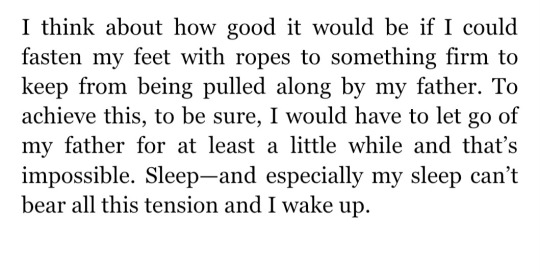
— April 19, 1916 / Franz Kafka diaries
495 notes
·
View notes
Text


Band of Brothers Birthdays
January
1 John S. Zielinski Jr. (b. 1925)
21 Richard D. “Dick” Winters (b. 1918)
26 Herbert M. Sobel (b. 1912)
30 Clifford Carwood "Lip" Lipton (b. 1920)
31 Warren H. “Skip” Muck (b. 1922) & Robert B. Brewer (b. 1924)
February
8 Clarence R. Hester (b. 1916)
18 Thomas A. Peacock (b. 1920)
23 Lester A. “Les” Hashey (b. 1925)
March
1 Charles E. “Chuck” Grant (b. 1922)
2 Colonel Robert L. “Bob” Strayer (b. 1910)
4 Wayne “Skinny” Sisk (b. 1922)
10 Frank J. Perconte (b. 1917)
13 Darrell C. “Shifty” Powers (b. 1923)
14 Joseph J. “Joe” Toye (b. 1919)
24 John D. “Cowboy” Halls (b. 1922)
26 George Lavenson (b. 1917) & George H. Smith Jr. (1922)
27 Gerald J. Loraine (b. 1913)
April
3 Colonel Robert F. “Bob” Sink (b. 1905) & Patrick S. “Patty” O’Keefe (b. 1926)
5 John T. “Johnny” Julian (b. 1924)
10 Renée B. E. Lemaire (b. 1914)
11 James W. Miller (b. 1924)
15 Walter S. “Smokey” Gordon Jr. (b. 1920)
20 Ronald C. “Sparky” Speirs (b. 1920)
23 Alton M. More (b. 1920)
27 Earl E. “One Lung” McClung (b. 1923) & Henry S. “Hank” Jones Jr. (b. 1924)
28 William J. “Wild Bill” Guarnere (b. 1923)
May
12 John W. “Johnny” Martin (b. 1922)
16 Edward J. “Babe” Heffron (b. 1923)
17 Joseph D. “Joe” Liebgott (b. 1915)
19 Norman S. Dike Jr. (b. 1918) & Cleveland O. Petty (b. 1924)
25 Albert L. "Al" Mampre (b. 1922)
June
2 David K. "Web" Webster (b. 1922)
6 Augusta M. Chiwy ("Anna") (b. 1921)
13 Edward D. Shames (b. 1922)
17 George Luz (b. 1921)
18 Roy W. Cobb (b. 1914)
23 Frederick T. “Moose” Heyliger (b. 1916)
25 Albert Blithe (b. 1923)
28 Donald B. "Hoob" Hoobler (b. 1922)
July
2 Gen. Anthony C. "Nuts" McAuliffe (b. 1898)
7 Francis J. “Frank” Mellet (b. 1920)
8 Thomas Meehan III (b. 1921)
9 John A. Janovec (b. 1925)
10 Robert E. “Popeye” Wynn (b. 1921)
16 William S. Evans (b. 1910)
20 James H. “Moe” Alley Jr. (b. 1922)
23 Burton P. “Pat” Christenson (b. 1922)
29 Eugene E. Jackson (b. 1922)
31 Donald G. "Don" Malarkey (b. 1921)
August
3 Edward J. “Ed” Tipper (b. 1921)
10 Allen E. Vest (b. 1924)
15 Kenneth J. Webb (b. 1920)
18 Jack E. Foley (b. 1922)
26 Floyd M. “Tab” Talbert (b. 1923) & General Maxwell D. Taylor (b. 1901)
29 Joseph A. Lesniewski (b. 1920)
31 Alex M. Penkala Jr. (b. 1924)
September
3 William H. Dukeman Jr. (b. 1921)
11 Harold D. Webb (b. 1925)
12 Major Oliver M. Horton (b. 1912)
27 Harry F. Welsh (b. 1918)
30 Lewis “Nix” Nixon III (b. 1918)
October
5 Joseph “Joe” Ramirez (b. 1921) & Ralph F. “Doc” Spina (b. 1919) & Terrence C. "Salty" Harris (b. 1920)
6 Leo D. Boyle (b. 1913)
10 William F. “Bill” Kiehn (b. 1921)
15 Antonio C. “Tony” Garcia (b. 1924)
17 Eugene G. "Doc" Roe (b. 1922)
21 Lt. Cl. David T. Dobie (b. 1912)
28 Herbert J. Suerth Jr. (b. 1924)
31 Robert "Bob" van Klinken (b. 1919)
November
11 Myron N. “Mike” Ranney (b. 1922)
20 Denver “Bull” Randleman (b. 1920)
December
12 John “Jack” McGrath (b. 1919)
31 Lynn D. “Buck” Compton (b. 1921)
Unknown Date
Joseph P. Domingus
Richard J. Hughes (b. 1925)
Maj. Louis Kent
Father John Mahoney
George C. Rice
SOURCES
Military History Fandom Wiki
Band of Brothers Fandom Wiki
Traces of War
Find a Grave
#this is going off who was on on the show#i double checked the dates and such but if you notice any mistakes please let me know :)#band of brothers#easy company#hbo war#not gonna tag everyone lol#mine: misc#yep it's actually Halls and not Hall#i've seen Terrence Harris's name spelled with as Terence but wenand t with two Rs s#since that's how it's spelled on photos of memorials and on his gravestone#I’ll do the pacific next! should be significantly shorter since there’s far fewer characters 😅
137 notes
·
View notes
Text
#OTD in Irish History | 28 April:
1714 – Sir Wentworth Harman, MP for Lanesborough, ‘coming in a dark night from Chapel-Izod, his coach overturning, tumbled down a precipice, and he dies in consequence of the wounds and bruises he received’. 1794 – The Reverend William Jackson was arrested in Dublin on this day in 1794. Jackson was born in Newtownards, Co Down, but spent much of his early life in England. He was a French spy…

View On WordPress
#EasterRising#irelandinspires#irishhistory#OTD#1916 Easter Rising#28 April#American Civil War#Dáil Eireann#Dublin#Dublin Castle#Eamonn De Valera#England#History#History of Ireland#Ireland#Irish Brigade#Irish History#Irish War of Independence#Thomas Francis Meagher#Today in Irish History
9 notes
·
View notes
Text

April, 1916 Fashion pages from "Harper's Bazar" magazine. Designs by Lucien and Hats from Gage. Click to enlarge!
206 notes
·
View notes
Text

The US Atlantic Fleet at Guantanamo Bay Naval Base, Cuba. (L-R) USS NEW HAMPSHIRE (BB-25), USS TEXAS (BB-35), USS NEW YORK (BB-34), USS ARKANSAS (BB-33) and several other unidentifiable dreadnoughts.
Photographed sometime between February 24, 1915 and April 10, 1916.
Posted by Glenn In-like Flynt to the Battleship Texas Foundation Group Facebook page: link
#USS New Hampshire (BB-25)#USS Texas (BB-35)#USS New York (BB-34)#USS Arkansas (BB-33)#USS New Hampshire#Connecticut Class#Predreadnought#USS Texas#USS New York#new york class#USS Arkansas#Wyoming Class#Dreadnought#battleship#warship#ship#Guantanamo Bay#Cuba#February#1915#united states navy#us navy#navy#usn#u.s. navy#my post#April#1916
30 notes
·
View notes